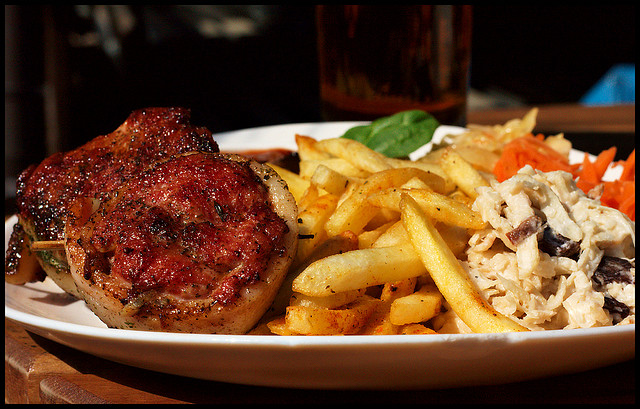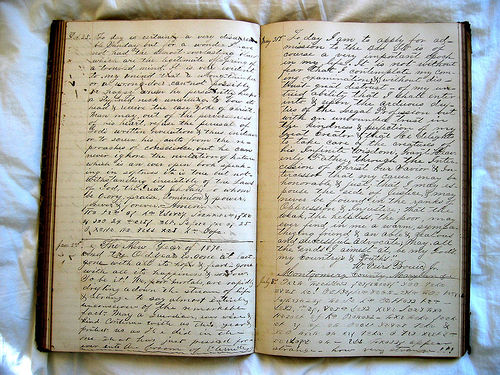
Source: Main Course, lifebeginsat50mm, Flickr
When you eat a big meal, the main course is what fills you up. The main course (sometimes the meat of the meal) is much like the “meat” of an informational text: the main point or the big idea about a subject. Details support or provide evidence about the main idea.
Read the following passage from Elsie: Adventures of an Arizona Schoolteacher 1913–1916. After Elsie Roberts died at the age of 99, her granddaughter, the writer of this book, found a copy of her grandmother’s diary and letters from her life as a young schoolteacher in Arizona. In this passage, examples of words that suggest the main ideas about Elsie have been highlighted.

Source: Diary, Barnaby, Flickr
Elsie: Adventures of an Arizona Schoolteacher 1913–1916
By Barbara Anne Waite
It was after her death in 1987 that I first picked up her well-worn black leather diary, not realizing it would reveal a young Elsie whom I had never imagined. The diary told of her first love, of heartache and sorrow, and of fascinating adventure. Never had I pictured my grandmother as being free-spirited, young, and in love. My curiosity was stirred, and I began to search for more records of her Arizona years.
Her diary could not give me all the answers, but hidden in a library archive was the answer to those tears. Piece by piece, through letters, newspaper articles, and the diary, her story deepened.
Now, let’s take these highlighted “main idea” words and summarize them, or reduce them to their essential points. The following sentence could be one possible summary of the main idea:
Elsie experienced her first love, some sorrow, and a life of adventure as a free-spirited young woman teaching in Arizona in the early twentieth century.

Source: Heart of flowers, zakwitnij, Flickr
In this summary, the red words are suggested by the evidence in the text. Notice that Waite mentions first love and in love in her sentences. Since summarizing means “to reduce to the essential points,” we only need to mention first love once in our summary rather than repeating all the references to love from the passage.
Just as we might expect, the details that follow in the book include the story of Elsie’s growing love for a young man, Karl Hurst (her first love), his having to move away (her sorrow), and the challenges she encountered while all alone and trying to teach children in grades ranging from kindergarten through high school (her life of adventure). These are the supporting details that develop our main idea about Elsie’s young adulthood.
Now, you try it. Read another passage, this time by writer Ryan Littrell, who searches for clues to his identity by studying the lives of his ancestors. Read through the passage once, and then, as you read again, click to highlight any text that may suggest Littrell’s main idea.

Source: found picture - 1914 – whole, uair01, Flickr

Reunion: A Search for Ancestors
By Ryan Littrell
Just think of a photograph: Nineteenth century, a man and a woman, two of your ancestors. No crinkled eyes or fixed smiles here, and no lips saying cheese. He’s wearing a dark suit and tie, and she’s wearing a black or gray dress that goes all the way to her ankles, with a collar that buttons tightly around her neck. Their arms are folded on their laps.
And when you focus on their eyes, you won’t see much, because the picture blurs when you zero in. You can’t see in their eyes what you see in a friend who trades a knowing glance with you, because these ancestors never had the chance to know you. But spookily, they’re here. Their DNA is our DNA, in us right now, influencing everything our bodies and minds do.

Source: Ancestors, Julie 70, Flickr
Did you find all three instances that suggest the main idea? Now, let’s use the highlighted clues to come up with a summary for the main idea in this passage. Click on the statement below that best summarizes the main idea.
As you may have noticed, the main idea is the point we want to take away from a text. In the next section, you will learn about details that support the main idea.